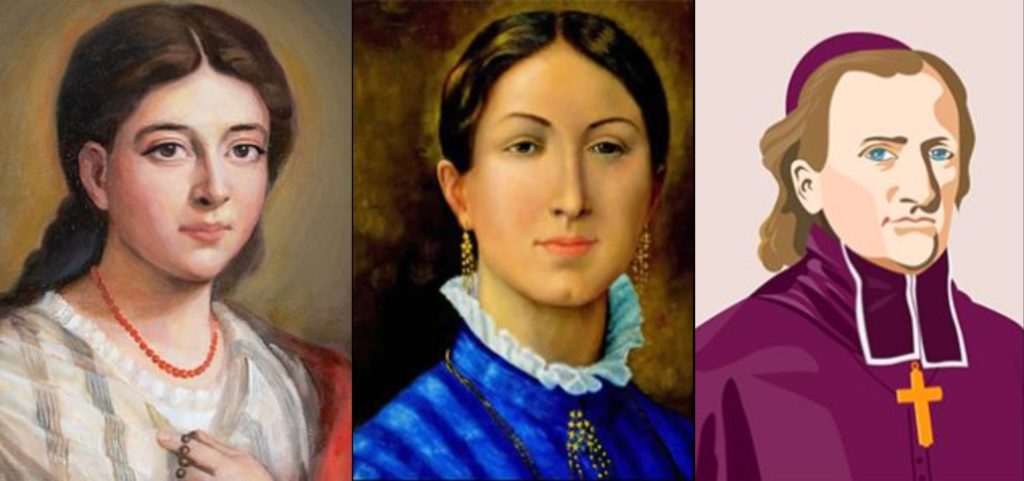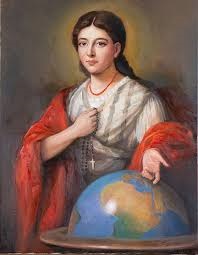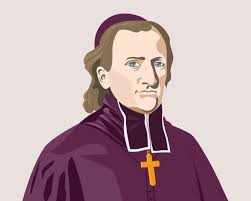Pontifical Mission Societies
Three Societies Under One Umbrella Since 1922

These three societies each received the official title of “Pontifical” work in 1922, and their central administration was transferred to Rome.
Pontifical Mission Societies have National offices in more than 120 countries. Today, this “family” of mission societies is the Church’s primary means to inform Catholics about her worldwide missionary work and encourage their active participation in those efforts, through prayer and sacrifice.
Almost two centuries after our story began, it continues — a story of all of us together — as “one family in mission” — committed to the worldwide mission of Jesus.

The Society
for the
Propagation of the Faith
Founded in 1822 in France by Pauline Jaricot (1799-1852)
Partnering Local Churches & Communities
Pauline originally joined the Paris Foreign Mission Society. However, she found it lacking in the area of raising funds. She established a system with the workers of the industrial revolution. Although they received poor wages, they were paid regularly. Pauline recruited the factory girls from her brother-in-law’s factory and collected from each one, every Friday, whatever they could spare. Her brother, Phileas, sent this money to the mission for the rescue of abandoned children in China. Pauline then found a system that allowed her to expand this effort, while retaining its essential unity. Groups of ten people and a promoter were formed. Each member paid a sou a week; the leader would collect them and give them to the person who was in charge. This formed the basis of the Society for the Propagation of the Faith.
A meeting between the Bishops and Pauline took place where she insisted that monies collected be sent to where they were needed most, not just to one Society or mission. Thus, it became a Universal Mission Aid Fund. The Society was approved by the Pope and became International in 1826. In 1922, to protect its assets from confiscation by a hostile government in France, the Holy Father, Pope Pius XI, brought it under papal protection, along with the Society for Missionary Childhood and the Society of St. Peter the Apostle. It is now located under the umbrella of the Congregation for the Evangelization of Peoples.
The Society works with local Churches to provide an ordinary subsidy for the day to day running of the diocese and to offer spiritual healing and practical assistance to the communities with the greatest needs. It supports the young Church by responding to requests to help build chapels and churches, pastoral centres, clinics and hospitals and to provide medications, pastoral care and emergency relief. Assistance is also provided for lay catechists in terms of formation, remuneration, and resources. All aid is respectful of the dignity and self-esteem of the recipients with the eventual aim of encouraging and developing independence.

The Society
of
St. Peter the Apostle
Founded in 1889 in France by Jeanne Bigard (1859-1934)

Fostering Local Church Leadership
Jeanne and her mother, Stephanie, had suffered from personal tragedies – the father committed suicide, and her brother was accidentally burnt to death. Both became virtual recluses, living almost as hermits. They turned to good works and became interested in making altar linen and vestments for missionaries in Japan.
Made aware of their interest, Fr. Villion, who was stationed in Japan, approached them in 1888. From Kyoto in Japan, he asked them for assistance in building a church. Although very wealthy, they were also very careful with money. Ultimately, they sold some land and a factory and gave 50,000 francs which enabled Fr. Villion to build his church.
In 1889, the Bishop of Nagasaki, Jules-Alphonse Cousin, suggested to the Bigards that they might consider supporting boys in Japan to train for the priesthood. Thus was born the idea of a general society to promote indigenous clergy throughout the world. The Bigards donated to the new society the whole of their considerable fortune. Approved by the Pope in 1890, it too became a Pontifical Mission Society in 1922.
The Society trains young men and women in their own country and culture to serve their people as religious Sisters, Brothers, or Priests. Also assisted are in their formation and training of those catechists who have been chosen to be teachers and formators of the catechists in their country.

Holy Childhood Association (Helping the Children)
Founded in 1843 in France by Bishop Charles de Forbin-Janson (1785-1844)
Encouraging Children to Care for Children
Bishop de Forbin-Janson met Pauline Jaricot around 1840. When touring the USA, he spoke on many issues including the work of the Propagation of the Faith. Back in Paris, he began to take an increasing interest in the rescue of abandoned babies in China. For advice, he returned to Lyons, France, to confer with Pauline. Two days of discussion produced a clear, positive, simple plan.
Just as Propagation of the Faith had been organised among adults to aid foreign missions, Bishop de Forbin-Janson would endeavor to found an organisation among children for the salvation of children. On 19th May 1843, he called his first meeting and set out to establish the new Society throughout France. It called upon its members for two things: a short daily prayer for the missions and a monetary sacrifice. As with the other two Societies, it came under papal protection and made a Pontifical Society in 1922.
Under its banner “children helping children”, monies raised through schools are directed towards self-help programs involving the building of schools, the provision of health and nutrition programs and medications, school fees, and teaching and learning resources.
Children in communities, orphanages, homes for the disabled, refugees, and those living on the streets are assisted by the generosity of children who wish to help make the love of Jesus known everywhere. In recent years, the efforts of children have been supported by adults through the “Children’s Mission Partners” program.